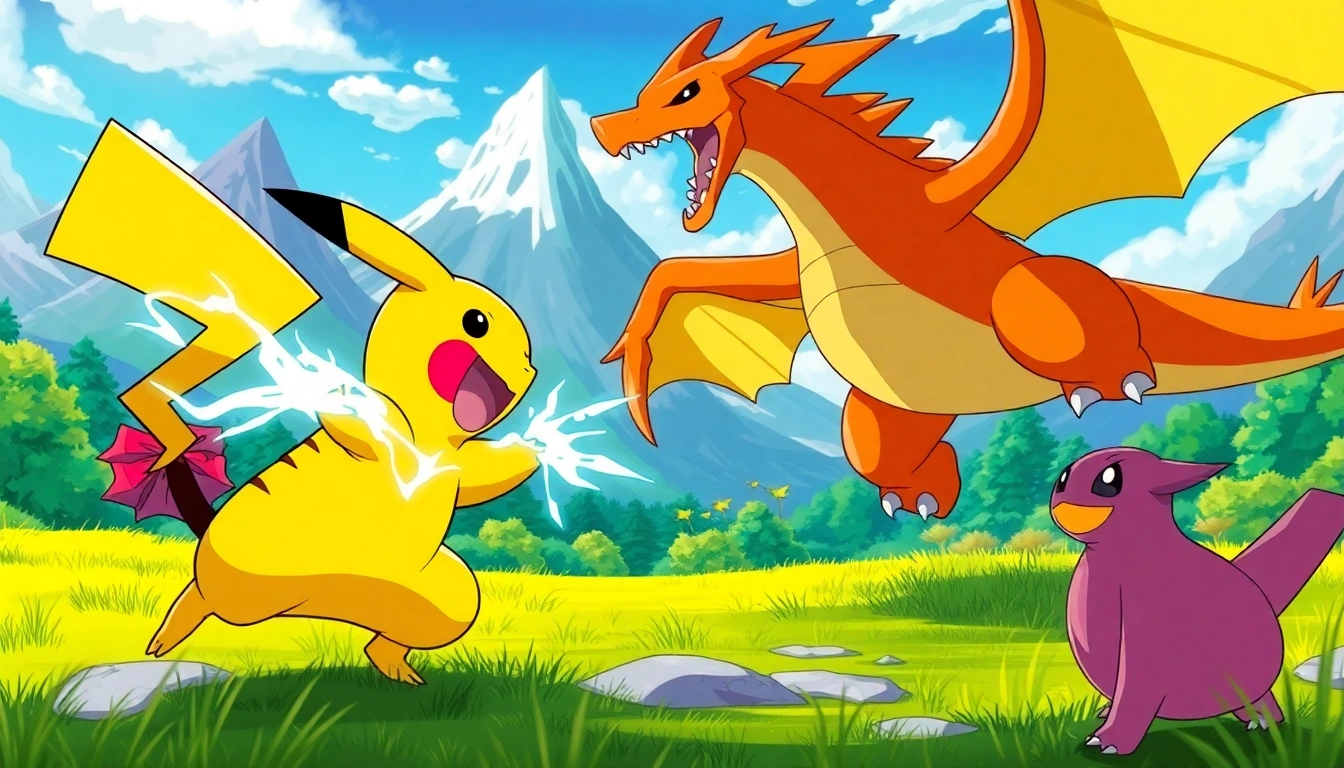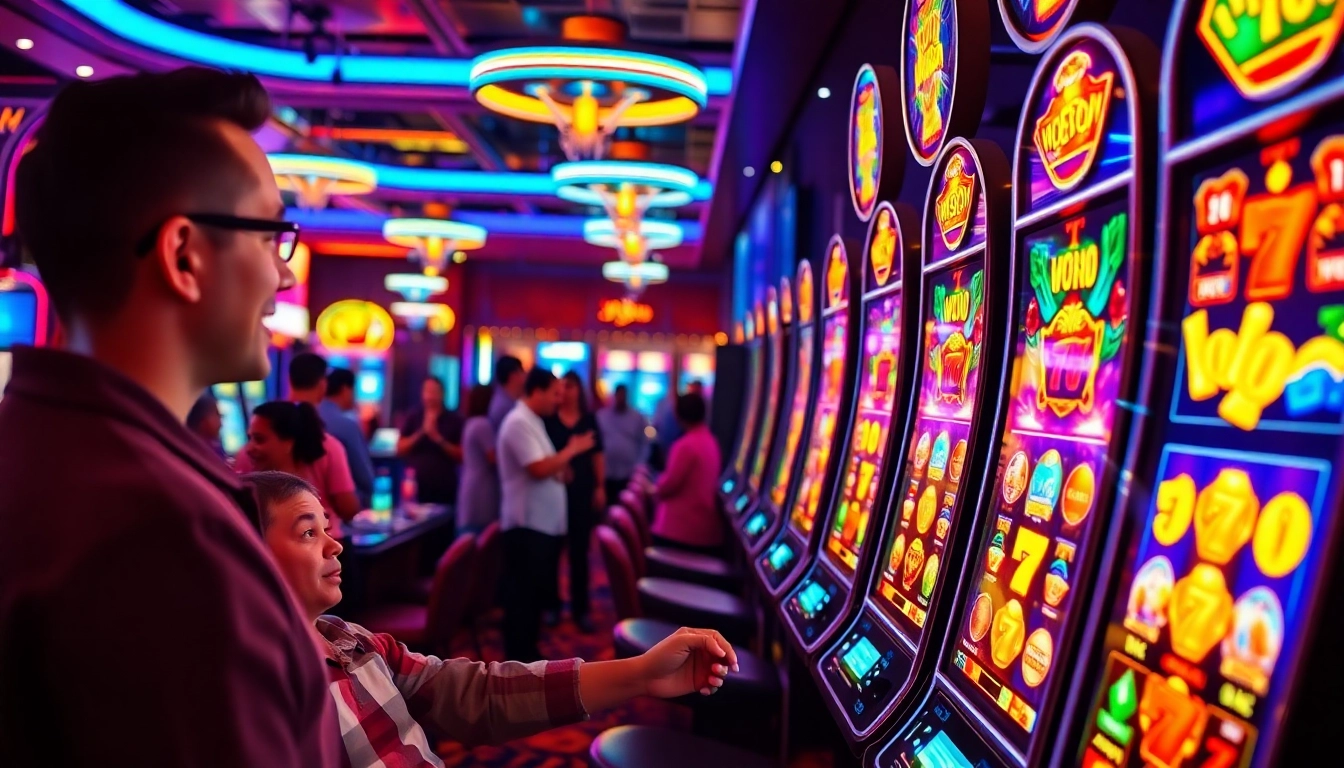Understanding Pokémon: The Basics and Beyond
What Are Pokémon?
Pokémon, short for “Pocket Monsters”, is a globally recognized media franchise originating in Japan. It encompasses an extensive range of video games, animated series, films, trading card games, and various other media forms. The franchise depicts a universe where humans coexist with unique creatures known as Pokémon, which possess various abilities and traits. Players, often called Pokémon Trainers, capture and train these creatures to battle others, complete their Pokédex, and become champions within the Pokémon League. The concept is beautifully simple yet profoundly enriched with strategy, collection, and companionship, sparking a cultural phenomenon that has persisted for decades.
The Evolution of Pokémon
Launched in the late 1990s, the Pokémon franchise quickly evolved from a pair of video games—Pokémon Red and Pokémon Green—into a multifaceted global empire. Over the years, Pokémon has transformed through numerous iterations, introducing new generations of games, with each adding more Pokémon species, features, and mechanics.
The animated series began airing in 1997, showcasing the adventures of Ash Ketchum and his Pokémon friends as they journeyed to compete in Pokémon battles and tournaments. This television series played a crucial role in popularizing the franchise, drawing admiration from audiences of all ages.
Since then, Pokémon has embraced innovations such as augmented reality through pokemon GO, a mobile game that encourages players to explore the real world to catch Pokémon. Various adaptations, spin-offs, and collaborations further extend Pokémon’s influence across diverse media, ensuring its relevance even amidst changing entertainment landscapes.
Pokémon Types and Their Strengths
In Pokémon, each creature belongs to one or two types, such as Fire, Water, Grass, Electric, Psychic, and many more. Understanding these types is fundamental for players, as each has strengths and weaknesses against others. For instance, Water-type moves are strong against Fire-types but weak against Grass-types.
The elemental interactions create a strategic layer that players must navigate during battles. Recognizing which type advantages they have can mean the difference between victory and defeat. By mastering these dynamics, trainers can assemble teams that effectively counter opponents, leveraging diverse abilities for tactical advantages.
Getting Started: How to Play Pokémon Games
Choosing Your Pokémon
The journey of every Pokémon Trainer begins with selecting their starting Pokémon during the initial phases of a game. Each Pokémon has distinct characteristics, making this choice significant. Players can select from a trio of starters, each representing different types—often a Fire-type, Water-type, and Grass-type.
Considerations during selection should not just revolve around aesthetics but also around each Pokémon’s potential for growth and adaptability in diverse battle situations. Some starting Pokémon evolve into powerful forms, providing players essential tools as they progress through challenges.
Basic Gameplay Mechanics
Pokémon games generally consist of capturing Pokémon, battling other trainers, and exploring vast, open worlds. Mechanics involve turn-based combat, where players issue commands to their Pokémon based on their moveset. Moves can include attacks, status effects, or defensive maneuvers, each with specific impacts on the battle outcome.
The reward system is designed to gratify players as they level up their Pokémon through battles and experience points (XP). Capturing new Pokémon and filling the Pokédex also serves as an engaging aspect of gameplay. Trainers face numerous challenges, including Gym Leaders and Elite Four members, culminating in the ultimate goal to become Pokémon Champion.
Tips for Beginners
New trainers may feel overwhelmed by the vast world and mechanics presented in Pokémon games. Here are some tips to ease into the adventure:
- Balance Your Team: Aim to build a diverse team representing different types. This versatility allows you to respond effectively to various opponents you encounter.
- Explore Thoroughly: Don’t hesitate to explore every corner of the game world. Hidden items, rare Pokémon, and additional battles provide valuable resources and experiences.
- Know When to Run: Not every battle needs to be fought. If faced with an overwhelmingly powerful opponent, it is wise to retreat and regroup.
By embracing these strategies, beginners can establish solid foundations to enjoy their Pokémon journey and progress with confidence.
Competitive Play: Elevating Your Pokémon Skills
Building a Balanced Team
Competitive play in Pokémon takes the game beyond casual encounters, focusing heavily on strategy and synergy within your team. A well-balanced team comprises Pokémon serving different roles, such as attackers, defenders, and supporters.
Team composition should reflect synergy among Pokémon types as certain combinations can enhance overall effectiveness. For instance, pairing a strong Water-type with an Electric-type can cover weaknesses and create strategic depth. Players must also consider the moveset of each Pokémon and how they complement each other’s strengths, ensuring that team weaknesses remain minimized.
Strategies for Battles
Winning in competitive battles requires foresight and tactical planning. Strategies can include outsmarting opponents by predicting their moves, employing status-altering tactics, or using items at the right moment.
Additionally, mastering type advantages can lead to quick victories. For example, using Ground-type moves against Electric-types can be a game-changer if timed correctly. Players are encouraged to familiarize themselves with the nuances of each Pokémon’s abilities and train their intuition to the gameplay, identifying patterns from their opponents.
Understanding Pokémon Moves
Each Pokémon possesses a set of moves that affect performance during battles, and understanding these moves is crucial for any competitive Trainer. Moves can vary broadly in terms of damage output, special effects, and type advantages. Every Trainer must familiarize themselves with the terminology surrounding moves, such as:
- STAB (Same Type Attack Bonus): When a Pokémon uses a move that matches its type, it often deals more damage.
- Status Moves: These moves do not inflict damage but can impose effects on opponents or provide benefits to the user.
- Coverage Moves: Moves outside a Pokémon’s type that target its competitors’ weaknesses.
In competitive scenarios, the optimal choice of moves can significantly turn the tide of the battle, making thorough knowledge indispensable.
Pokémon in Popular Culture
The Evolution of Pokémon in Media
Pokémon’s impact transcends digital entertainment into various forms of media, including television, films, and merchandise. The franchise has continually evolved, producing several animated series, spin-off shows, and feature films that have captivated audiences worldwide.
Movies like *Pokémon: The First Movie* and *Pokémon Detective Pikachu* have broadened the appeal of Pokémon to global audiences, showcasing their stories through unique perspectives. Furthermore, Pokémon’s ability to reinvent itself—whether through new character introductions or story arcs—ensures its relevance in a rapidly changing entertainment landscape.
Impact of Pokémon on Gaming
The gaming world has been indelibly shaped by Pokémon’s introduction of diverse mechanics and gameplay styles. Evolving from simple 8-bit graphics to vibrant 3D landscapes, the series has consistently pushed technological boundaries. The introduction of mobile games like Pokémon GO propelled augmented reality into the mainstream, inviting millions to experience gaming in everyday environments.
Moreover, Pokémon’s unique blend of collection and RPG elements has inspired countless games across different genres, cementing its legacy as a pioneer of innovation.
Fan Communities and Events
The vibrancy of Pokémon culture is sustained by passionate fan communities and events. From Pokémon tournaments to fan conventions, the community fosters connection and shared enthusiasm. Events such as Pokémon World Championships and annual Pokémon Direct presentations generate considerable excitement, offering fans a chance to engage deeply with new announcements and competitive gameplay.
Moreover, online forums and social media platforms facilitate discussions on strategies, theories, and developments in the Pokémon universe. These interconnected networks highlight the ongoing dedication of Pokémon fans and solidify the franchise’s standing in popular culture.
Future of Pokémon: Trends and Predictions
New Games and Releases
The Pokémon franchise has a robust pipeline of upcoming games and expansions designed to keep the community engaged and excited. Anticipated releases often build upon previous installments while introducing innovative features and Pokémon species. As technology advances, new concepts such as enhanced graphics, immersive worlds, and cross-platform gameplay are likely to become commonplace.
Moreover, special collaborations and spin-off titles pave the way for fresh experiences, continually drawing in both longtime fans and new players eager to enter the Pokémon universe.
Technological Innovations in Pokémon
Emerging technologies offer vast possibilities for Pokémon’s evolution in the gaming industry. Innovations such as virtual reality (VR) and artificial intelligence (AI) can lead to more immersive gameplay and smarter opponent behavior. Virtual reality could provide trainers with an unparalleled experience, allowing them to interact within their Pokémon’s universe physically.
Furthermore, blending educational facets with gameplay can open doors for learning—promoting strategy, critical thinking, and community engagement among younger players. Future designs could integrate these aspects seamlessly into existing formats to enrich the overall experience.
Community Engagement and Growth
The Pokémon community demonstrates remarkable fluidity and resilience, adapted to changes in technology and player expectations. The franchise’s ongoing commitment to maintaining interaction with its audience through events, online content, and feedback loops will likely result in sustained growth.
As Pokémon continues to evolve, it is essential for fans to embrace and nurture these developments, promoting inclusivity and collaboration across platforms. Community initiatives focused on sharing experiences, strategies, and lore will only strengthen the bond shared by fans and fortify Pokemon’s cultural legacy for years to come.



